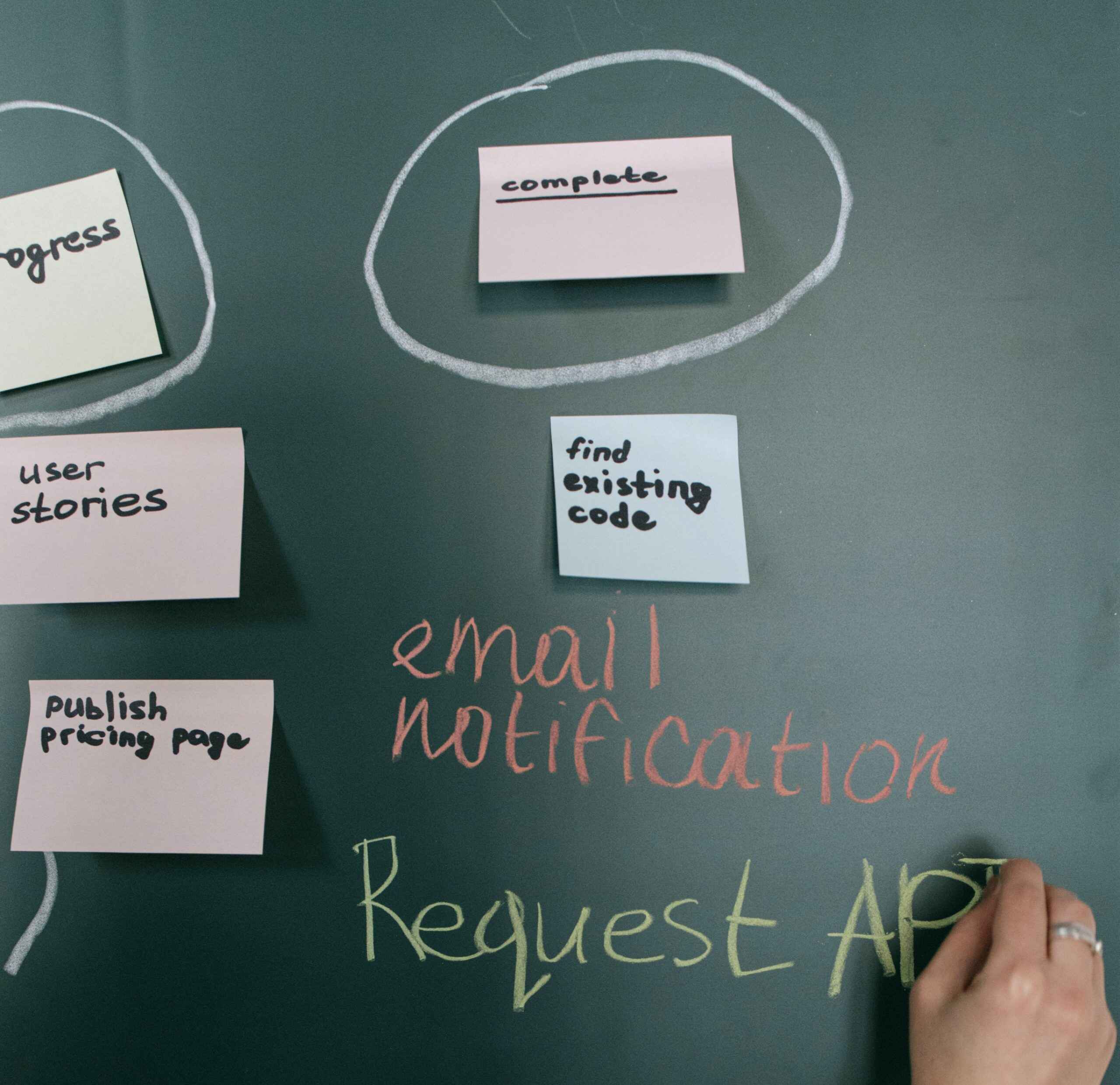In today’s digital age, the demand for fitness apps has skyrocketed. With people becoming more health-conscious and fitness-focused, these apps serve as a personal trainer right in the palm of your hand. Whether you’re a fitness enthusiast or simply looking to stay active, a fitness app can provide you with personalized workouts, track your progress, and offer valuable insights into your health and fitness journey.
Understanding the Basics of Fitness App Development
Before diving into the cost of building a fitness app in London, let’s take a moment to understand what exactly a fitness app is. A fitness app is a mobile application that helps users manage and improve their physical well-being. It typically includes features such as workout tracking, nutrition tracking, goal-setting, and progress monitoring.
What is a Fitness App?
A fitness app is designed to assist individuals in achieving their fitness goals. It serves as a digital companion, guiding users through workouts, providing exercise recommendations, and offering tips on nutrition and healthy living.
With the increasing popularity of smartphones and the growing awareness of the importance of fitness, fitness apps have become a staple in the lives of many people. These apps have revolutionized the way individuals approach their fitness journey, providing them with a convenient and accessible tool to track their progress, stay motivated, and make informed decisions about their health.
Whether you are a fitness enthusiast looking to optimize your workouts or someone just starting their fitness journey, a fitness app can be your ultimate companion. It can provide you with personalized workout plans, tailored nutrition advice, and a platform to connect with like-minded individuals who can offer support and encouragement.
Key Features of a Fitness App
A successful fitness app needs to have a range of features to cater to the diverse needs of its users. Some essential features include:
- Workout tracking: Users should be able to log their workouts and track their progress over time.
Workout tracking is a crucial feature of any fitness app. It allows users to record their exercises, sets, and reps, providing them with a comprehensive overview of their training sessions. By tracking their workouts, users can monitor their progress, identify areas for improvement, and stay motivated to achieve their fitness goals.
- Nutrition tracking: Users should be able to log their daily food intake and monitor their calorie and nutrient intake.
Proper nutrition plays a vital role in achieving fitness goals. A fitness app should allow users to log their meals, track their calorie intake, and monitor their macronutrient distribution. By keeping a record of their nutrition, users can make informed decisions about their diet, identify any deficiencies or excesses, and make necessary adjustments to support their fitness journey.
- Goal-setting: Users should be able to set specific fitness goals and track their progress towards achieving them.
Setting goals is an integral part of any fitness journey. A fitness app should provide users with the ability to set specific, measurable, attainable, relevant, and time-bound (SMART) goals. By setting goals, users can define their desired outcomes, track their progress, and celebrate their achievements. This feature helps users stay focused, motivated, and accountable throughout their fitness journey.
- Personalized recommendations: The app should provide personalized workout and nutrition recommendations based on the user’s goals and preferences.
Every individual has unique fitness goals and preferences. A fitness app should leverage user data, such as age, gender, fitness level, and goals, to provide personalized workout and nutrition recommendations. By tailoring recommendations to individual needs, the app can enhance user experience, increase engagement, and optimize results.
- Integration with wearables: The app should be able to sync with popular fitness wearables to track activity levels and provide accurate data.
With the advancements in wearable technology, fitness apps can now seamlessly integrate with popular fitness trackers, smartwatches, and other wearables. This integration allows users to track their activity levels, heart rate, sleep patterns, and other relevant data. By syncing with wearables, the app can provide users with accurate and real-time information, enabling them to make data-driven decisions about their fitness routines.
By incorporating these key features, a fitness app can provide users with a comprehensive and personalized fitness experience. Whether you are a beginner or an experienced fitness enthusiast, a fitness app can be your ultimate companion on your journey to a healthier and fitter lifestyle.
Fitness App Market Overview in the UK
The market for fitness apps in the UK is thriving, with a growing number of people incorporating technology into their fitness routines. From our experience at WeSoftYou, a software development company with a proven track record, we’ve seen the demand for fitness apps steadily increase over the years.
With the rise of smartphones and wearable devices, fitness apps have become an essential tool for individuals looking to track their progress, set goals, and stay motivated. These apps offer a wide range of features, from tracking steps and calories burned to providing personalized workout plans and nutrition advice.
Current Trends in the Fitness App Market
One of the current trends in the fitness app market is the integration of artificial intelligence (AI) and machine learning (ML) algorithms. These technologies enable apps to provide highly personalized recommendations and adapt to users’ changing needs. For example, AI algorithms can analyze users’ workout data and suggest modifications to improve their performance or prevent injuries.
Another trend is the gamification of fitness apps, where users are rewarded for achieving their fitness goals or completing challenges. This adds an element of fun and motivation to the app, keeping users engaged and committed to their fitness journey. Gamification features may include virtual badges, leaderboards, and social sharing options to encourage friendly competition among users.
In addition to AI and gamification, fitness apps are also incorporating social features to foster a sense of community among users. These features allow users to connect with friends, join virtual fitness challenges, and share their progress on social media platforms. By providing a supportive and interactive environment, fitness apps encourage users to stay motivated and accountable.
Understanding the UK Fitness App User
It’s crucial to understand the target audience of fitness apps in the UK. According to research, the majority of fitness app users are between the ages of 25 and 44 and are actively engaged in fitness activities. They are tech-savvy individuals seeking convenience and flexibility in their fitness routines.
These users are looking for apps that can fit seamlessly into their busy lifestyles, allowing them to exercise at their own pace and on their own schedule. They appreciate features like workout reminders, customizable workout plans, and the ability to track their progress over time.
Furthermore, UK fitness app users value apps that provide accurate and reliable data. They rely on these apps to track their workouts, monitor their heart rate, and calculate calories burned. Therefore, it’s essential for fitness apps to leverage advanced sensor technology and ensure the accuracy of the data they provide.
Overall, the market for fitness apps in the UK is dynamic and ever-evolving. With technological advancements and changing consumer preferences, fitness app developers need to stay ahead of the curve to meet the needs and expectations of their target audience. At WeSoftYou, we are committed to delivering innovative and user-friendly fitness apps that empower individuals to lead healthier and more active lives.
Factors Influencing the Cost of Fitness App Development
When it comes to the cost of building a fitness app in London, there are several factors that need to be taken into consideration. From design and user interface to app functionality and backend development, each element plays a role in determining the overall cost.
Design and User Interface
The design and user interface of a fitness app are crucial for creating a seamless and enjoyable user experience. This includes creating visually appealing layouts, intuitive navigation, and interactive elements. The complexity of the design and the need for custom graphic assets can impact the cost of development.
For instance, if you want to incorporate a unique and eye-catching design that reflects your brand identity, it may require the expertise of a skilled graphic designer and additional development time. This can increase the overall cost of the project. On the other hand, if you opt for a simpler design with pre-existing templates, it may reduce the development cost.
Furthermore, the user interface plays a significant role in the overall user experience. A well-designed and intuitive interface can enhance user engagement and retention. It involves careful consideration of factors such as color schemes, typography, and iconography. The more attention to detail and customization required for the user interface, the higher the development cost may be.
App Functionality and Features
The range of functionality and features you want to incorporate into your fitness app will also affect the cost. Advanced features such as workout generators, exercise libraries, and real-time tracking require more development time and expertise.
For example, if you wish to include a workout generator that creates personalized exercise routines based on user preferences and goals, it would require complex algorithms and extensive backend development. This can increase the cost of development as it requires more time and expertise to implement.
Additionally, the inclusion of features like exercise libraries with detailed instructions and videos, social sharing capabilities, or integration with wearable devices can add to the overall cost. These features require additional development and integration efforts, which may increase the time and resources required for the project.
Backend Development
The backend development of a fitness app involves building the server-side infrastructure that supports the app’s functionality. This includes user management, data storage, and integration with external APIs. The complexity of the backend development can significantly impact the cost of the project.
For instance, if your fitness app requires a robust user management system with features like user registration, login, and personalized profiles, it would require extensive backend development. This involves implementing secure authentication mechanisms, database management, and API integrations, which can increase the development cost.
Moreover, if your app needs to fetch data from external sources, such as fitness trackers or nutrition databases, it would require additional backend development and API integrations. The complexity of these integrations can vary, and accordingly, the cost of development may vary as well.
App Maintenance and Updates
After the initial development, it’s essential to consider ongoing app maintenance and updates. This involves bug fixing, security updates, and compatibility with new operating systems. It’s important to budget for this as it ensures the long-term success and usability of your fitness app.
Regular maintenance and updates are necessary to address any issues or bugs that may arise after the app is launched. This ensures a smooth user experience and helps retain users. Additionally, as new operating systems and devices are released, compatibility updates may be required to ensure your app remains functional and accessible to a wider user base.
Moreover, security updates are crucial to protect user data and prevent any potential vulnerabilities. Regular security audits and updates help maintain the integrity and trustworthiness of your fitness app.
Considering the cost of ongoing maintenance and updates is important to ensure the long-term success and sustainability of your fitness app. It’s advisable to allocate a portion of your budget for these activities to ensure your app remains up-to-date and competitive in the market.
| Cost Component | Estimated Cost Range (in GBP) |
|---|---|
| Development | £50,000 – £200,000 |
| Design | £10,000 – £50,000 |
| User Interface (UI) Design | £10,000 – £50,000 |
| User Experience (UX) Design | £10,000 – £50,000 |
| Workout Tracking Features | £20,000 – £100,000 |
| Exercise Library | £10,000 – £50,000 |
| Nutrition Tracking | £10,000 – £50,000 |
| Goal Setting | £10,000 – £50,000 |
| Progress Tracking | £10,000 – £50,000 |
| Social Interaction Features | £10,000 – £50,000 |
| Testing | £5,000 – £30,000 |
| Deployment | £2,000 – £10,000 |
| Maintenance and Support | £20,000 – £100,000 |
10 Steps to Create a Fitness App
Define Your Fitness App’s Purpose and Goals
- Begin by clarifying the main purpose of your fitness app. Determine if it’s designed for tracking workouts, providing fitness guidance, promoting healthy living, or a combination of these. Establish specific goals for the app, such as helping users achieve fitness milestones, tracking progress, or improving overall well-being.
Identify Your Target Audience
- Understand your target audience’s demographics, fitness levels, goals, and preferences. Tailor your app’s features, content, and user experience to meet the needs of your target users, whether they are beginners looking to get in shape or experienced athletes seeking advanced training.
Choose App Features and Functionalities
- Define the core features of your fitness app, such as workout tracking, nutrition tracking, exercise libraries, and social community aspects. Consider incorporating features like personalized workout plans, video tutorials, progress charts, and social sharing to enhance user engagement.
Design an Intuitive User Interface (UI)
- Create a user-friendly and visually appealing UI that makes it easy for users to navigate and interact with your app. Prioritize clear menu structures, intuitive icons, and a responsive design that adapts to various devices and screen sizes.
Develop the App
- Engage a development team or professionals experienced in app development to bring your fitness app to life. Select a technology stack suitable for your app’s requirements, and ensure the app is compatible with both iOS and Android platforms to reach a broader user base.
Implement Data Security Measures
- Protect user data and privacy by incorporating robust security measures. Implement encryption protocols, secure authentication processes, and comply with relevant data protection regulations like GDPR to instill trust among users.
Test and Debug
- Thoroughly test the app to identify and rectify any bugs, glitches, or usability issues. Beta testing with a group of real users can provide valuable feedback for improvement.
Launch the App
- Prepare a comprehensive marketing and launch strategy. Publish your fitness app on app stores like Apple App Store and Google Play Store, and promote it through various channels, including social media, fitness forums, and partnerships with influencers or fitness professionals.
Gather User Feedback and Iterate
- Encourage user feedback and reviews to continually improve the app. Use user suggestions to enhance existing features, add new functionalities, and ensure the app remains relevant and engaging.
Provide Ongoing Maintenance and Updates
- Regularly update the app to fix bugs, enhance performance, and introduce new features. Address user concerns promptly and keep the app aligned with evolving fitness trends and technologies.
Hiring a Fitness App Development Team in London
When it comes to hiring a fitness app development team in London, it’s crucial to find the right partners. We at WeSoftYou understand the intricacies of fitness app development and can guide you through the entire process.
Developing a fitness app requires a team with a deep understanding of the industry and the ability to create user-friendly and engaging experiences. Our team at WeSoftYou has years of experience in developing fitness apps that cater to various needs, whether it’s tracking workouts, monitoring nutrition, or providing personalized training plans.
Our team of developers, designers, and project managers work closely together to ensure that your fitness app not only meets your requirements but also exceeds your expectations. We believe that a successful fitness app should not only be visually appealing but also intuitive and easy to use.
Finding the Right Development Team
Choosing the right development team can make all the difference in the success of your fitness app. Look for a team with experience in building fitness apps, a strong portfolio, and positive client testimonials.
At WeSoftYou, we take pride in our extensive portfolio of successful fitness app projects. Our team has worked with various clients in the fitness industry, ranging from personal trainers and fitness studios to wellness centers and health organizations. We have a proven track record of delivering high-quality fitness apps that have helped our clients reach their goals and engage their users.
When selecting a development team, it’s important to consider their expertise in different areas such as app design, user experience, and backend development. Our team at WeSoftYou consists of specialists in each of these areas, ensuring that every aspect of your fitness app is meticulously crafted and optimized.
Average Cost of Hiring a Development Team
The cost of hiring a fitness app development team in London can vary depending on the complexity and scope of your project. On average, the development cost can range from £50,000 to £200,000, depending on your requirements. It’s essential to have a detailed discussion with the development team to get an accurate cost estimate.
During the initial consultation, our team at WeSoftYou will assess your project requirements, including the features, functionalities, and integrations you desire. We will then provide you with a transparent and detailed cost breakdown, ensuring that there are no hidden costs or surprises along the way.
Keep in mind that investing in a high-quality fitness app can yield significant returns in terms of user engagement, customer satisfaction, and revenue generation. A well-designed and well-developed fitness app can attract a loyal user base and position your brand as a leader in the fitness industry.
At WeSoftYou, we understand the importance of delivering value for your investment. Our team is committed to providing top-notch development services that align with your budget and business goals. We believe that a successful partnership is built on trust, transparency, and mutual understanding.
Case Study: Successful Fitness Apps Made in London
London has become a hub for innovative fitness app development, with several successful apps emerging from the city. These apps not only provide valuable fitness resources but also demonstrate the endless possibilities of what a fitness app can achieve.
Let’s dive into two remarkable fitness apps that were made right here in London, inspiring fitness enthusiasts worldwide.
App 1: Features and Development Cost
App 1 is a groundbreaking fitness app that offers an extensive range of features designed to cater to every fitness need. It provides users with personalized workout plans tailored to their goals, abilities, and preferences. From strength training to cardio exercises, the app covers a wide variety of fitness routines.
In addition to workout plans, the app also incorporates a comprehensive nutrition tracking system. Users can easily log their meals, monitor their calorie intake, and track their macronutrient consumption. This feature ensures that users maintain a balanced and healthy diet, complementing their fitness journey.
Real-time tracking is another standout feature of the app. Users can monitor their progress during workouts, receiving instant feedback on their performance. This real-time feedback helps users stay motivated and make necessary adjustments to their form or intensity.
The development of App 1 was an extensive process that required significant investment. The total development cost for this app amounted to approximately £150,000. A team of skilled developers, designers, and fitness experts collaborated for around six months to bring this exceptional fitness app to life.
App 2: Features and Development Cost
App 2 takes a unique approach to fitness by gamifying the entire experience. It combines the benefits of exercise with the thrill of competition, making fitness more enjoyable and engaging for users.
The app offers a variety of challenges, encouraging users to push their limits and achieve their fitness goals. Whether it’s running a certain distance, completing a set number of push-ups, or reaching a specific weightlifting target, the app provides a wide array of challenges to keep users motivated.
Leaderboards add a competitive element to the app, allowing users to compare their progress with friends, colleagues, or even strangers. This fosters a sense of community and healthy competition, inspiring users to strive for improvement.
Social features are also integrated into App 2, enabling users to connect with like-minded individuals who share similar fitness goals. Users can share their achievements, offer support to others, and even participate in group challenges.
The development cost for App 2 amounted to approximately £100,000. A dedicated team of developers and designers worked tirelessly for around four months to create this captivating fitness app that seamlessly combines gamification and fitness.
London’s thriving fitness app industry continues to produce remarkable applications that revolutionize the way people approach fitness. These successful apps demonstrate the city’s commitment to innovation and its ability to create cutting-edge solutions for fitness enthusiasts worldwide.
Conclusion
In conclusion, building a fitness app in London can be a worthwhile investment. With the increasing demand for fitness apps and the expertise available from companies like WeSoftYou, you have the opportunity to create a successful and profitable app. However, it’s crucial to carefully consider the cost factors and find the right development team to ensure a seamless and enjoyable user experience.
If you’re ready to take the next step in building your fitness app, contact us at WeSoftYou. Our team of experienced developers and designers can provide you with a free consultation or project estimation tailored to your specific needs. Let’s bring your fitness app idea to life and help people achieve their health and fitness goals!
Read how much does it cost to build E-commerce app in London, UK.
FAQ
The development time for a fitness app can vary depending on its complexity and features. On average, it can take anywhere from four to six months to develop a fully functional fitness app.
Yes, you can customize the features of your fitness app to align with your specific requirements. Our team at WeSoftYou can work closely with you to understand your vision and tailor the app to meet your unique needs.




















